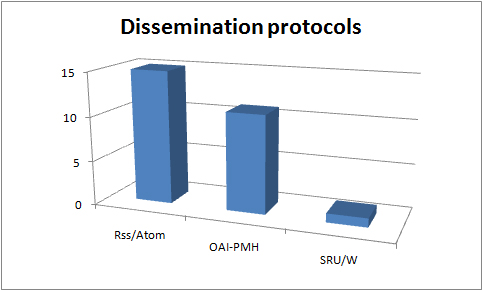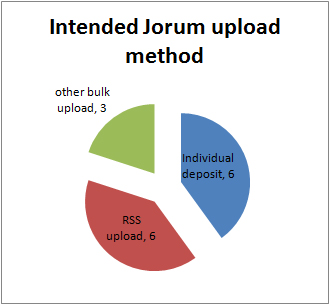What technical protocols are projects using to share their resource? and how are they planning on representing their resources in Jorum? This is a post in the UKOER 2 technical synthesis series.
[These posts should be regarded as drafts for comment until I remove this note]
Dissemination protocols
The chosen dissemination protocols are usually already built in the platforms in use by projects; adding or customising an RSS feed is possible but often intricate and adding an OAI-PMH feed is likely to require substantial technical development. DelOREs investigated existing OAI-PMH plugins for WordPress they could use but didn’t find anything usable within their project.
As will be discussed in more detail when considering Strand C – RSS is not only the most supported dissemination protocol, from the programme’s evidence, it is also the most used in building specialist discovery services for learning and teaching materials. The demand for an OAI-PMH interface for learning resources remains unknown. [debate!]
Jorum representation
- The statistics on Jorum upload method are denoted expressions of intent – projects and Jorum are still working through these options.
- Currently RSS upload to Jorum (along with all other forms of bulk upload) is set up to create a metadata record not deposit content.
- Three of the uploaders using RSS are using the edshare/eprints platform (this platform was successfully configured to deposit metadata in bulk via RSS into Jorum in UKOER phase 1).
- Jorum uses RSS ingest as a one-time process – as I understand it it does not revisit the feed for changes or updates [TBC]
- As far as I know PORSCHE are the only project who have an arranged OAI-PMH based harvest (experimental for Jorum upload under investigation as part of an independent project – [thanks to Nick Shepherd for the update on this HEFCE-funded work: see comments and more information is available on the ACErep blog)]

